Regional News
Tourists Warned Against Swimming at Phrao Bay, Samet Island
RAYONG – Tourists were warned against swimming at Phrao Bay and other beaches on Samet Island after the Pollution Control Department conducted a fourth survey and found a high presence of toxic chemicals.
An oil leakage from a pipeline of the PTT Global Chemical in the sea off the eastern province of Rayong at the end of July has impacted the aquatic environment in the province, particularly at Phrao Bay of Samet Island
Environmentalists say the government has been too hasty in declaring the area safe and has given misleadingly upbeat assessments about the spill.
Ply Pirom, a coordinator with the environmental group Greenpeace who specializes in toxic substances, said that government officials were being pressured to produce data that showed the water was clean, and that the government was too cozy with PTT, the highly profitable oil group. Thailand’s natural resources and environment minister, Vichet Kasemthongsri, was previously chairman of the board at PTT.
“Everything about this issue is suspicious,” Mr. Ply said. “They are saying the water is clear, but people are worried about what they don’t see.”
A resort signage is seen as Royal Thai Navy personel (background) clean up a beach from a major oil slick on Ao Phrao beach on the island of Ko Samet.Mr. Plodprasop, the deputy prime minister, has criticized government data, saying other findings of the pollution control department — that mercury in the water greatly exceeded safe levels — were wrong. After his criticism, those findings were rejected by the Thai cabinet, and new tests were ordered. These produced lower mercury readings.
Thon Thamrongnawasawat, a marine biologist who has examined the coastline extensively since the spill, said the government had been “too hasty to claim that everything had returned to normal.”
“Nature takes time to recover,” he said. “The Thai government has been too optimistic — and is not in sync with reality.”
Piamsak Menasveta, a marine-pollution expert at Chulalongkorn University in Bangkok and the chairman of the country’s Independent Commission of Environment and Health, called for an independent verification of the government’s pollution data, particularly of the inconsistent mercury findings. “I am confident that there are some mistakes,” he said in an interview.
Hotels have reported cancellations since the spill, especially among Western Europeans and weekend visitors from Bangkok, which is a two-and-a-half hour drive from the jetty that connects Koh Samet with the mainland.
But the beaches here are far from empty, perhaps owing to the positive spin the government has put on the accident. A dozen tourists interviewed on the eastern side of the island, which was not directly affected by the spill, said they were unaware it had occurred.
“I don’t know anything about this,” said Wang Zhaoyang, a university student from Xian, China, visiting with her family. “If I knew before I came, I might have reconsidered.” Photo by ZUMA / RexChinese and Russian tourists continue to arrive in large groups, tour operators say. “We would be in real trouble without the Chinese,” said Sanya Boonyarit, a speedboat pilot who ferried tourists to the island.
The director of Thailand’s pollution control department, Wichean Jungrungrueng, told Thai news outlets Thursday that beaches on the eastern side of the island were safe for swimming but that Phrao Bay still contained levels of total petroleum hydrocarbon, the potentially harmful chemicals found in crude oil, above acceptable limits.
The PTT official charged with the cleanup, Kun Patumraj, an executive vice president for engineering and maintenance, predicted that the affected area would be ready to receive tourists for the high season, which begins in November. He spoke in an interview Thursday on a beach where workers were flushing out small brown globules of oil from nearby rocks, causing a faint smell of crude to waft through the air. The company is carrying out regular tests of sand and water in the area affected by the spill, but Mr. Kun acknowledged a trust deficit. “It’s difficult,” he said. “Sometimes people don’t believe us.”
Mr. Ply of Greenpeace said the spill had highlighted a broader and longer-term question for Thailand: the sustainability of pristine beaches so close to industrial zones. Foreign visitors often envision Thailand as country of rice paddies and beach resorts, but the country is also a regional industrial powerhouse with the largest car industry in Southeast Asia and thousands of factories making a range of products like computer hard drives and chemicals.
At dusk on Koh Samet, tourists flock to a spot above a stretch of rocky shoreline on the island, where they watch the sunset. From the same spot in the evenings, a visitor can see twinkling lights and gas flares in the distance — a petrochemical complex known as Map Ta Phut. The oil that spilled into the Gulf of Thailand in July, which a government committee says amounted to 54,000 liters, or 14,000 gallons, was bound for a refinery in the industrial zone.
A lawsuit by residents four years ago in Map Ta Phut temporarily stopped expansion of the refineries on environmental grounds. Government studies have shown that at least eight types of cancer among Thais were highest in Rayong Province, where Map Ta Phut and other industrial zones are located.
Mr. Piamsak, the maritime-pollution expert, said that regulations were lax and that the government did not have contingency plans to deal with oil and chemical spills. Critics say PTT was ill-prepared for the July spill. The company’s largest boom, the tubular barriers used to contain spills, was only 200 meters — or 650 feet — long, vastly inadequate for a spill that spanned several kilometers.
Koh Samet, which is about 35 kilometers, or 20 miles, from the refineries, is technically part of a national park, although nearly every beach is blanketed with hotels and guesthouses, and back alleys are strewn with trash. Yet considering its proximity to industry, the waters here are remarkably clear.
To Ms. Wang, the tourist from China, where waterways are often blacked by pollution, the island appeared pristine. After emerging from a swim in a bikini, she scanned the beach.

Regional News
Thai Immigration Police Detain Over 26,000 Illegal Migrant Workers
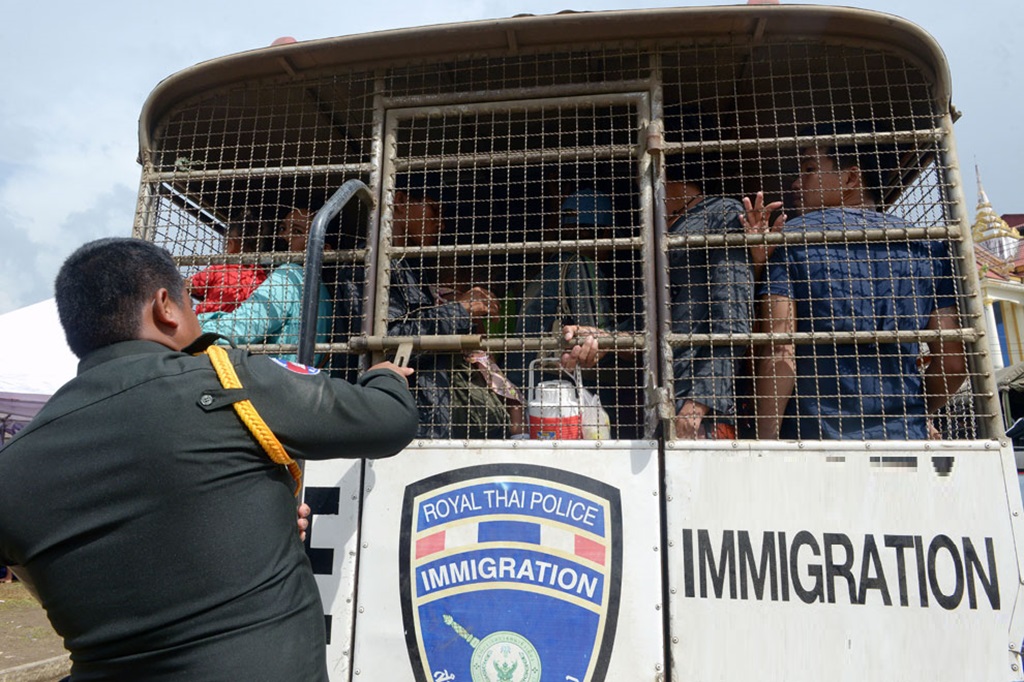
Thailand’s Immigration Police have detained approximately 26,000 illegal migrant workers from Laos, Myanmar, and Cambodia during an eight-day operation in Bangkok and surrounding regions, according to a Royal Thai Police spokesperson.
Mr Adisorn Keudmeuangkhon of the Bangkok-based Migrant Working Group said the drive was in response to an increasing number of concerns about an influx of illegal migrant labor.
“Some Thai people see that many illegal workers are competing for their job positions in the past few months,” he told me. “That’s why the ministry has to take tougher action.”
Civil strife in Myanmar and the recent implementation of a military conscription have driven thousands of Burmese into Thailand, while severe inflation and limited job opportunities in Laos have also encouraged an influx of workers from that country.
Between June 5 and 12, officials detained and checked 20,111 Myanmar laborers, 1,659 Laotian migrant workers, and 3,971 Cambodian workers, according to the Ministry of Labor.
It marked the start of a 120-day campaign to audit workplaces and arrest unlawful migrant workers, according to the government.
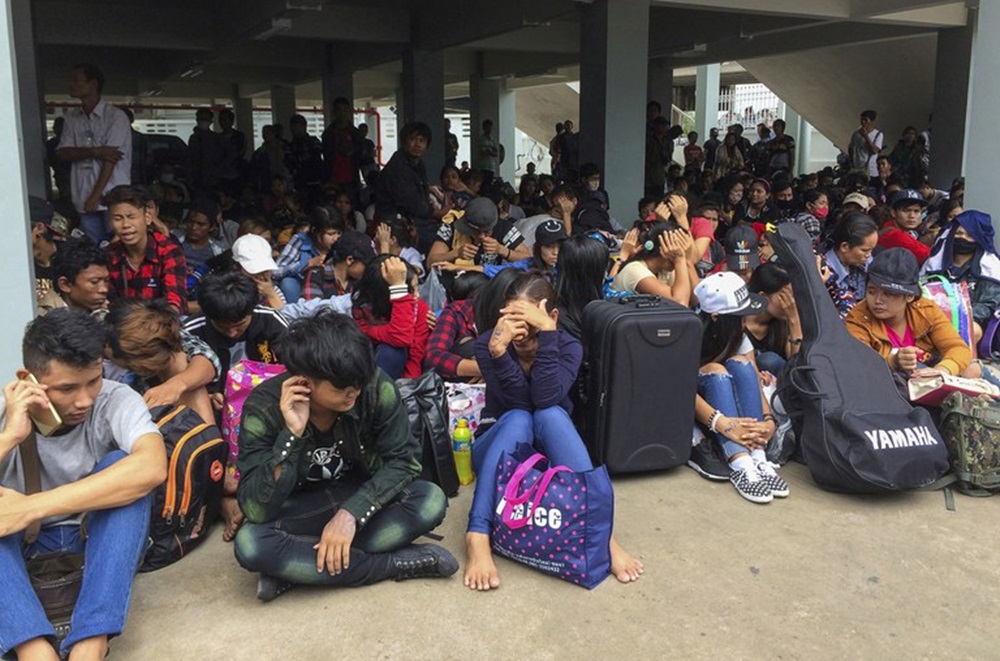
Migrant Workers to be Deported
According to Keudmeuangkhon, undocumented workers face fines ranging from 5,000 to 50,000 Thai baht (US $136 to $1,365), deportation, and a two-year prohibition on re-entering Thailand.
Authorities did not intend to file criminal charges, he claimed.
Authorities raided 1,774 workplaces, according to Moe Gyo, chairman of the Joint Action Committee on Burmese Affairs, which advocates for Myanmar labor rights.
He stated that since the military junta activated conscription, there has been an upsurge in the number of arrests of Myanmar citizens in Thailand who do not have a work permit identity card.
All men aged 18 to 35 and women aged 18 to 27 must serve in the military for at least two years. The first group of 5,000 conscripts summoned by Myanmar’s junta will start duty at the end of this month, military sources told AFP on Monday.
According to Keudmeuangkhon, the bulk of Lao migrant workers in Thailand work as fresh market shopkeepers, restaurant servers, and mall salespeople.
Most people visit Thailand as part of ASEAN’s visa-free policy for tourists, but they stay longer than the 30-day restriction once they find job.
“Employers like to hire Lao migrant workers in the service sector because they can speak fluent Thai,” he told me.
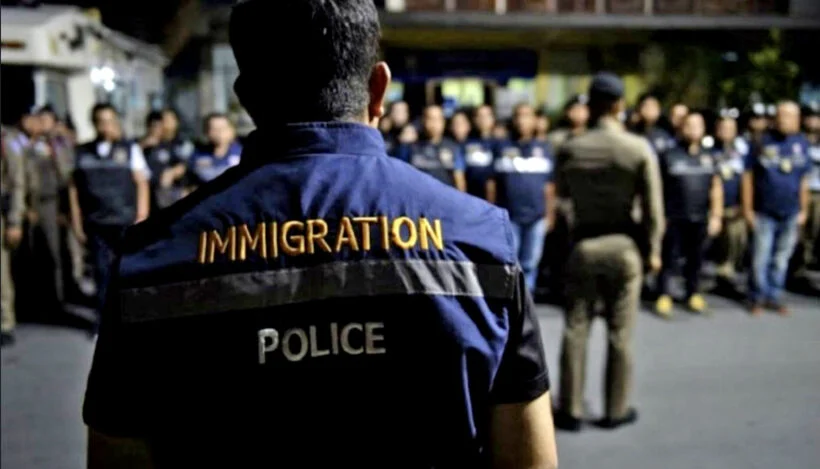
Immigration Police Detain Illegal Migrant Workers
The Thai Cabinet may approve an enhanced program for Thai employers to register their unauthorized foreign workers in July or August. Keudmeuangkhon explained.
Last month, the Thai Ministry of Labor’s Foreign Workers Administration office announced that 268,465 Lao migrant workers were officially working in Thailand.
Baykham Kattiya, Lao Minister of Labor, told Radio Free Asia earlier this month that there are 415,956 migrant workers in other nations, the majority of whom work in Thailand.
According to her, the Lao government believes that over 203,000 persons working outside of the nation lack proper work documents.
However, a Lao official familiar with the labor industry informed Radio Free Asia, a BenarNews-affiliated news station, on June 20 that the number of illegal Lao migrant workers in Thailand and abroad is likely significantly greater.
“They go to other countries as illegal migrant workers through different types of methods – as tourists or students,” said the politician. “Thus, it is hard for the immigration police to collect data on these people.”
Government Officials Responsible for Smuggling in Migrant Workers
Government Officials Responsible for Smuggling in Migrant Workers
News
High School Student Dies After Being Electrocuted By School Water Dispenser
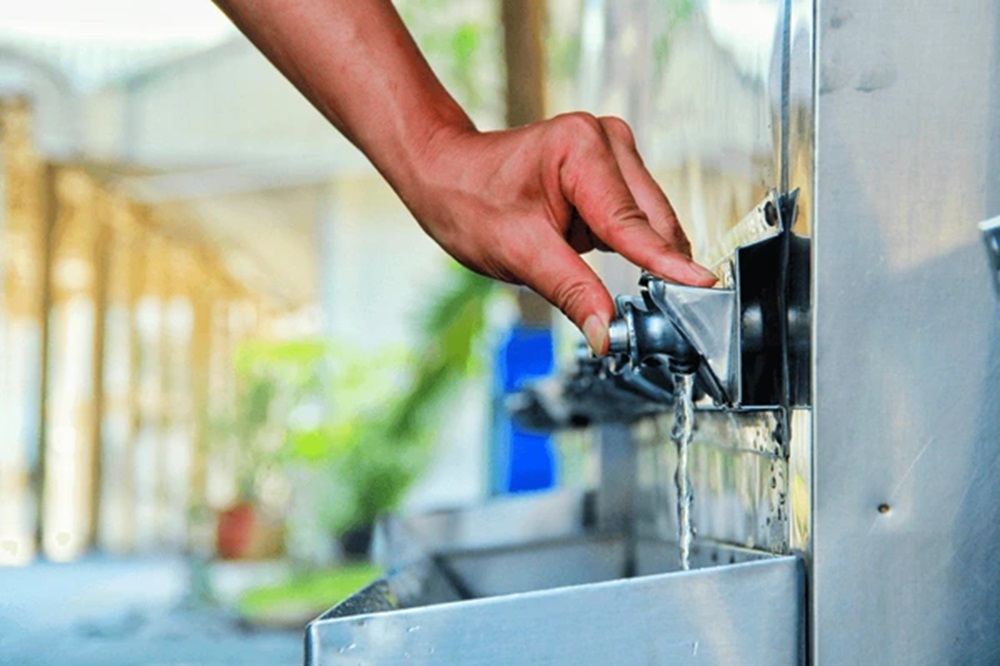
Thailand’s Office of Basic Education Commission has initiated an investigation into the electrocution of a 14-year-old student by a water dispenser in a high school. The event happened at noon on Friday, during the high school’s sports day. The victim was a Grade 8 student.
According to local media in Trang Province, the incident occurred when a teacher instructed the pupil to turn off a water dispenser amid a heavy rain.
According to a witness, the child collapsed while strolling with his friend near a water station. The friend claimed he attempted to assist but was also shocked by electricity.
According to reports, the friend then recovered, left the site, and requested assistance from teachers. A teacher ran to the scene and used a towel to pull the boy away by the ankle. He was taken to the hospital, but it was too late, they claimed.
The event sparked criticism from parents and netizens over school safety, as well as the slow response to aid the young youngster.
Mr. Chainarong Changrua, head of Trang-Krabi’s Secondary Educational Service Area Office, told local media on Sunday that forensic officers from Trang Provincial Police had visited the area. They discovered the blown breaker switch behind the water dispenser, he explained.
The breaker was burned out, thus the authorities assumed the disaster was caused by a short circuit that allowed energy to spill to a neighboring power pole. The student also appeared wet and was not wearing shoes when electrocuted.
According to the Office of Basic Education Commission, a probe team will complete its investigation this week.
The student’s father, Mr Pornchai Thepsuwan, 53, claimed he was saddened when he saw his son’s body. The boy (Wayu), was the youngest of two boys, he explained. He stated that following the tragedy, the school director and staff gave financial assistance to the families.
Mr Pornchai also said he would not seek charges against the institution because he believed it was an accident.
Electrical accidents in Thailand
Electrocution instances in Thailand have increased alarmingly in recent years. Many mishaps occur as a result of improper wiring and inadequate maintenance of electrical systems.
Public locations, such as schools and markets, frequently lack adequate safety precautions, putting individuals in danger. In rural areas, antiquated infrastructure exacerbates the situation, resulting in more frequent and serious events.
Although several high-profile cases have brought these challenges to light, genuine progress has been gradual. Furthermore, the rainy season heightens the likelihood of electrical accidents, as water and exposed wires do not mix well.
The government has made steps to strengthen safety standards, but enforcement is patchy. More education on electrical safety could help to reduce these accidents.
Unfortunately, better infrastructure and tougher rules may have prevented many of these incidents. The loss and injuries caused by electrocution are avoidable, emphasizing the need for immediate action.
Over 200 High School Students Facing Sedition Charges in Thailand
Over 200 High School Students Facing Sedition Charges in Thailand
News
Thailand’s Tourist Police Crackdown on Tourist Scammers in Pattaya
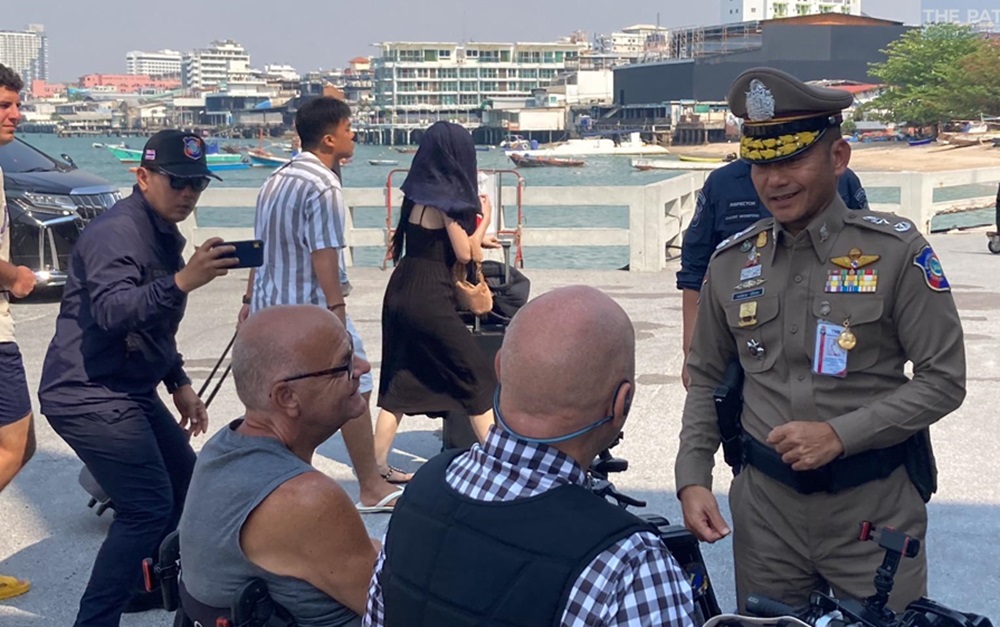
Thailand’s Tourist Police said it is collaborating with embassies from five countries to combat tourist scams and ten criminal gangs in Pattaya. The Tourist Police Bureau, convened a meeting on Thursday Pol Lt Gen Saksira Phuek-am told a press briefing.
Pol Lt Gen Saksira Phuek-am, the Tourist Police bureau commissioner said the participants included ambassadors from South Korea, Ukraine, Russia, India, and Switzerland.
He told the briefing the he had ordered a crackdown on tourist frauds, such as fraudulent or low-quality tour operators and unfair sales of goods and services. Stepped-up operations began on June 19 and will continue until June 25.
He stated that the agency was working with numerous organisations to increase tourists’ confidence in visiting Pattaya.
Gen Saksira spent time on the famed Walking Street speaking with officers on duty and assigned them to seek for members of ten criminal groups known to operate in Pattaya.
Meanwhile, Prime Minister Srettha Thavisin will visit Chon Buri on Saturday to assess the tourism situation. He intends to visit the site of a future Formula One racecourse near Khao Phra Tamnak in Bang Lamung District.
Prime Minister Srettha recently met with Formula One organisers in Italy to examine the potential of including Thailand on the race schedule in the future.
On Sunday, the Prime Minister will pay a visit to Rayong’s U-tapao airport to discuss development on the airport’s land, with the goal of encouraging investment in the Eastern Economic Corridor.
Police Chief Reinstated
In other police news, Pol Gen Torsak Sukvimol has been reinstated as national police chief following the conclusion of an investigation into a highly publicised quarrel, according to Wissanu Krea-ngam, Prime Minister Srettha Thavisin’s counsellor.
Mr Wissanu released the investigation’s findings on Thursday, after the prime minister formed a fact-finding committee chaired by Chatchai Promlert to investigate into the quarrel between Pol Gen Torsak and his deputy, Pol Gen Surachate Hakparn.
The four-month study revealed conflicts and disorder at all levels of the Royal Thai Police, but it was unclear whether these issues arose from a single cause or several causes, according to Mr Wissanu.
The findings revealed that both Pol Gen Torsak and Pol Gen Surachate were involved, with each team contributing to the tensions, he noted.
Mr Wissanu indicated that Pol Gen Surachate was reinstated as deputy national police head on 18 April following his relocation to the Prime Minister’s Office on 20 March. A disciplinary committee was formed to investigate Pol Gen Surachate, and he was ordered temporarily suspended from the police force.
Because there were no further difficulties to explore, it was decided to restore Pol Gen Torsak. He plans to retire on September 30.
On March 20, Mr Srettha abruptly transferred both top police officers to the Prime Minister’s Office in an effort to address the growing schism within the police service.
Kitrat Panphet, Deputy National Police Chief, was subsequently named Acting Police Chief. According to sources, Pol Gen Surachate could face money laundering charges related to online gaming networks.
Source: Bangkok Post
-

 News4 years ago
News4 years agoLet’s Know About Ultra High Net Worth Individual
-
Entertainment2 years ago
Mabelle Prior: The Voice of Hope, Resilience, and Diversity Inspiring Generations
-

 Health4 years ago
Health4 years agoHow Much Ivermectin Should You Take?
-

 Tech2 years ago
Tech2 years agoTop Forex Brokers of 2023: Reviews and Analysis for Successful Trading
-

 Lifestyles3 years ago
Lifestyles3 years agoAries Soulmate Signs
-

 Movies2 years ago
Movies2 years agoWhat Should I Do If Disney Plus Keeps Logging Me Out of TV?
-

 Health3 years ago
Health3 years agoCan I Buy Ivermectin Without A Prescription in the USA?
-

 Learning3 years ago
Learning3 years agoVirtual Numbers: What Are They For?